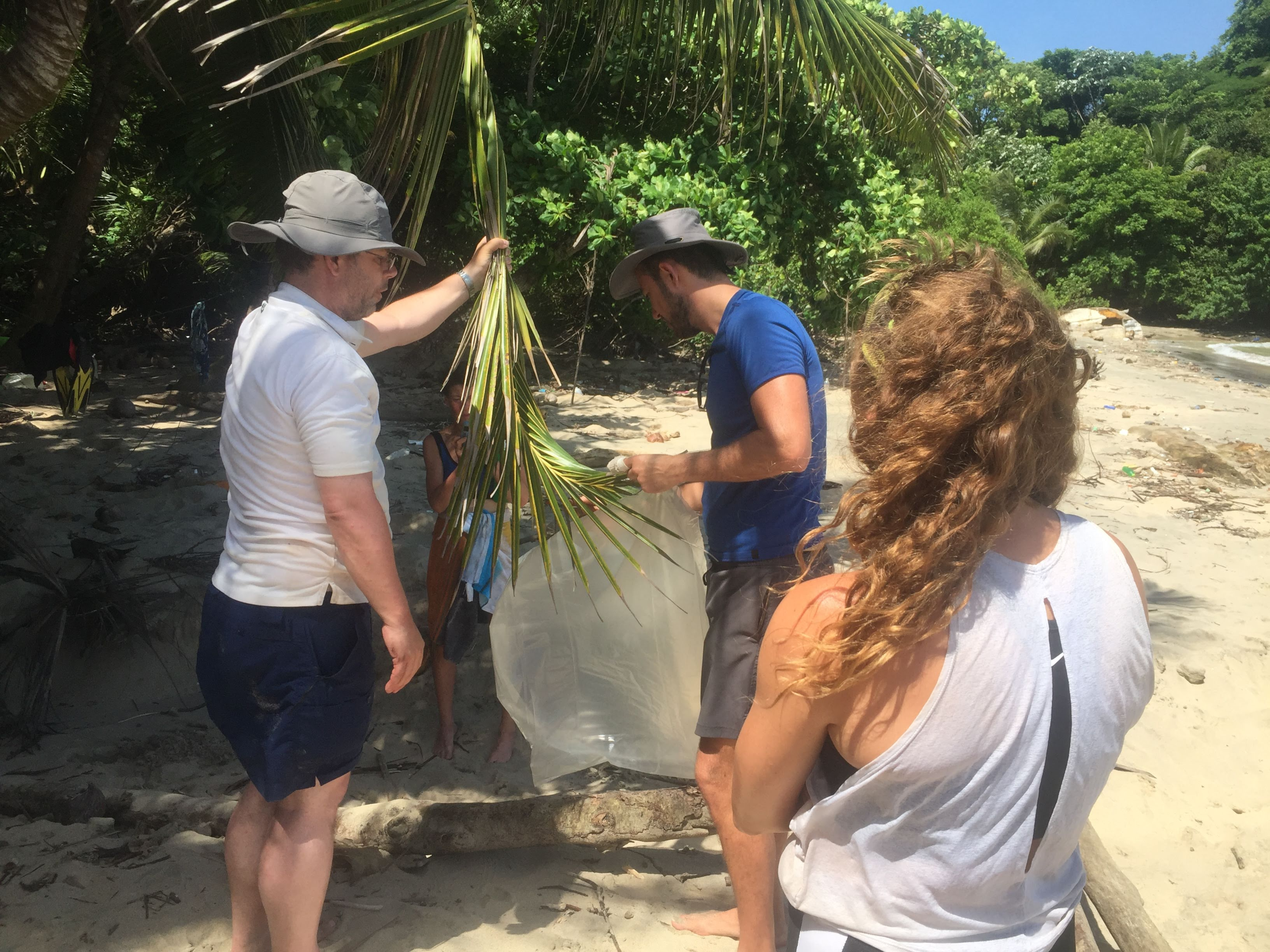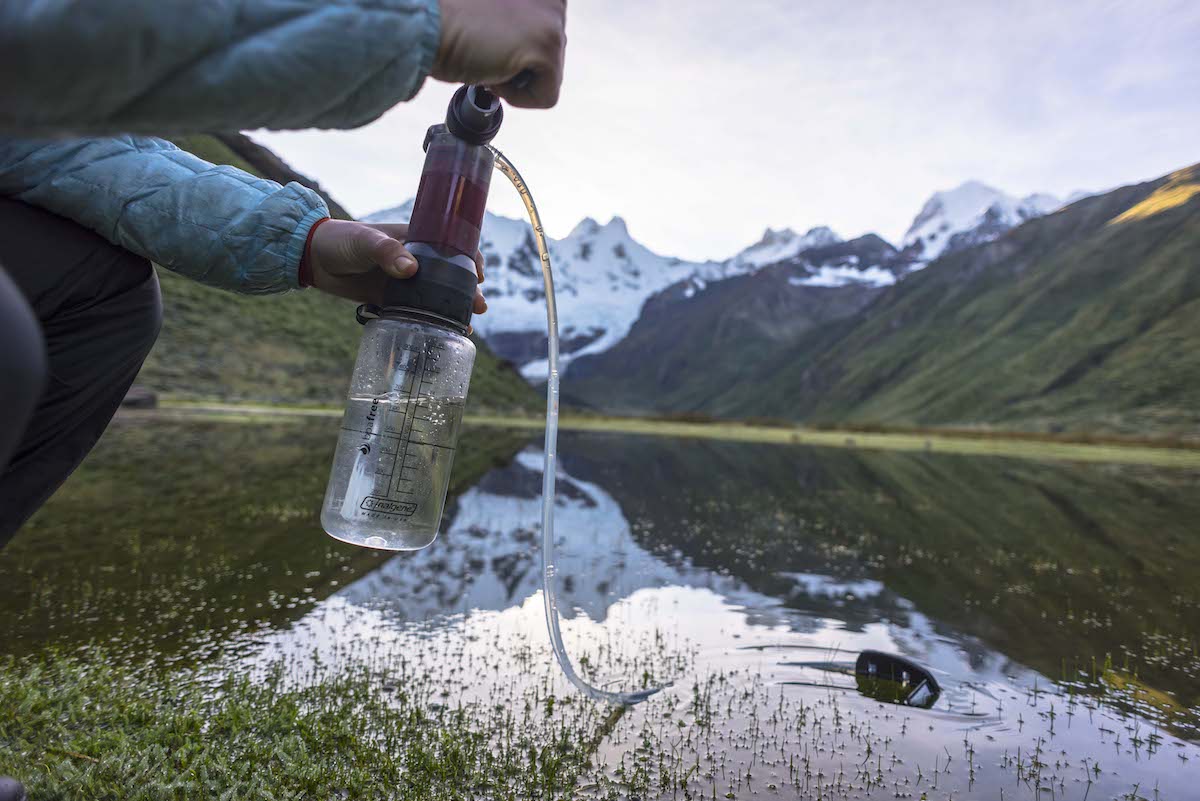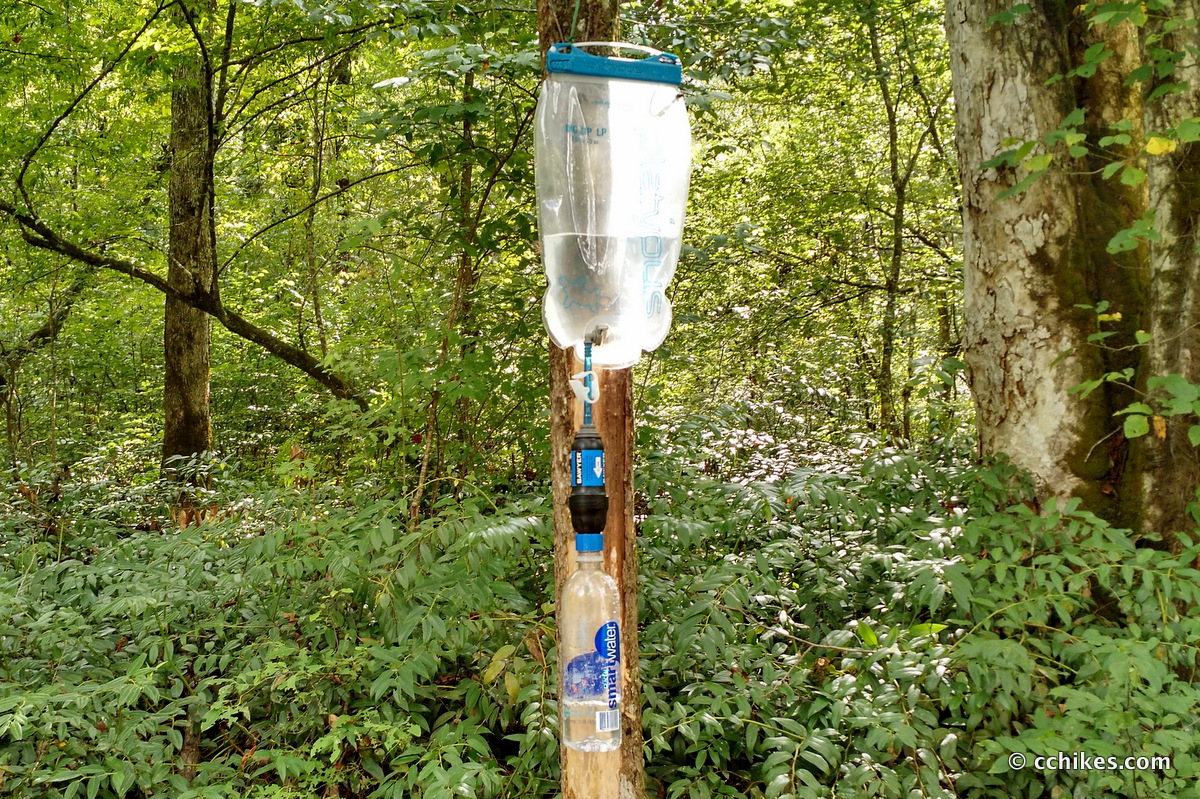Let's dive into the life-sustaining topic of Water Purification in the Wild. Let's ensure that every sip of water you take in the wild is as pure as nature intended, reducing risks to public health and elevating your potential for survival.
The Paramount Importance of Safe Drinking Water
In any survival situation, securing safe drinking water is paramount. Whether you're trekking through the backcountry or preparing for unforeseen emergencies, understanding how to transform untreated water from potentially contaminated water sources into potable, purified water is a vital skill.
Understanding Water Contaminants and Risks
Biological Hazards: Bacteria, viruses, and protozoa can lurk in natural water sources, posing serious health risks.
Chemical Pollutants: Pesticides, heavy metals, and other chemical contaminants can infiltrate water supplies, making them unsafe for consumption.
Particulate Matter: Dirt, sand, or vegetation can make water unpleasant to drink and may harbor microorganisms.

The Art and Science of Water Purification
The process of water purification involves several methods. Let's explore the most reliable ones, ensuring you have access to clean water wherever your adventure takes you.
Method 1: Boiling Water
Boiling is the tried-and-true, age-old method of disinfection. It's simple—bring your water to a rolling boil for at least one minute (a few minutes more at high altitudes) to kill most pathogens. But remember, while boiling kills biological contaminants, it does not remove chemical pollutants.
Method 2: Chemical Treatment
Chemical treatments, such as Chlorine Dioxide or Iodine, are widely used for drinking water treatment. Products like Potable Aqua are convenient, though they require a wait time to be effective and may leave a residual taste.
Method 3: UV Purification
Technological advances have brought us UV Light purification tools like the UV Purifier which neutralize microorganisms through ultraviolet light exposure. It's effective, lightweight, and perfect for clear water but less so for cloudy, particulate-filled water.
Method 4: Filtration Systems
Modern filtration methods range from personal water filters, like the Katadyn BeFree or Peak Squeeze, to more comprehensive systems like the MSR Guardian. These filters provide clean water at various flow rates and can handle bacteria, protozoa, and even some viruses.
Gravity Filter: A Convenient Solution
Gravity filters are an excellent choice for basecamps or groups. They work by letting gravity pull water through a filter, typically offering higher volumes of treated water without the constant pumping.
Bottle Filters: On-the-Go Purification
Bottle filters are integrated into water bottles for immediate drinking water treatment. They offer a high degree of portability and convenience.

Determining the Best Purification Method for You
Selecting the right purification method depends on multiple factors:
Availability of Water Sources: Are you near a fresh water source or dealing with murky, stagnant water?
Portability Needs: Are you on the move or stationary?
Group Size: Do you need to purify water for yourself or a larger group?
Type of Contaminants: Are you dealing with biological, chemical, or sedimentary contaminants?
Real-World Application of Water Purification Techniques
Let's ground this information in practical application. Imagine traversing a remote wilderness area, and you've come across a stream. It's not advisable to drink directly from this water source due to the unknown presence of pathogens. Instead, reach for your MSR Guardian filter and start pumping. In mere minutes, you'll have safe drinking water devoid of bacteria and parasites.
Or perhaps you're setting up camp and want to ensure your crew has sufficient drinking supplies. Set up a Gravity Filter and let it do its work while you tend to other survival tasks, like building a shelter or starting a fire (check out my post on the best fire-starting methods).

Tips for Ensuring Quality Water Purification
Always start with the clearest water possible; pre-filter if necessary.
Follow manufacturer's instructions on purification products.
Understand that some methods require time to be effective.
Regularly maintain and replace filter elements to ensure efficacy.
Exploring the Spectrum of Water Filtration Devices
While we've touched on some key water purification methods, let's further navigate the world of filtration devices that can make all the difference when you're miles from civilization and need to ensure your drinking water is free from dangerous impurities.
Advanced Filtration: Beyond the Basics
The Peak Squeeze System
The Peak Squeeze system is a marvel of portability and efficiency. With its squeeze bag design, it offers a robust solution for personal use while on the move. The system typically includes a reusable squeeze pouch, a hollow-fiber membrane filter, and a cleaning plunger, ensuring that you can continually access clean water no matter where you find yourself.
The Katadyn Befree's Flexibility
The Katadyn Befree water filter has gained popularity among hikers and survivalists for its compact design and ease of use. With its collapsible flask, you can fill up from a stream or pond and drink directly from the filter or pour into another container for later use. Its 0.1-micron water filter is capable of removing harmful organisms such as bacteria and protozoa.

The Role of Water Treatment in Disease Control
Without proper Water Treatment, you're at risk of contracting waterborne diseases that can quickly turn a survival situation into a health emergency. It's imperative we understand water treatment not just as a convenience but as a critical component in Disease Control.
The Reliability of Purification Tablet
In scenarios where you need a lightweight and fail-safe method, Purification Tablet such as iodine or chlorine dioxide come to the rescue. These small, potent tablets can be easily stowed in any survival kit and can treat a significant amount of water, ideal for when you need to ensure potable water on lengthy treks.
Longevity of Filtered Water
Once you have Filtered Water, it's important to store it properly to keep it safe for drinking. Use clean containers, and if possible, keep your water away from direct sunlight and high temperatures, which can encourage the growth of microorganisms even in treated water.
Harnessing Natural Water Purification Methods
Aside from the technological advancements, there are also natural means to augment the water purification process. They are often used in conjunction with other purification methods for enhanced safety.
Utilizing Natural Water Sedimentation
Allowing water to stand and settle before filtration can aid in reducing the cloudiness of water, which commonly occurs in Natural Water sources. This process can greatly enhance the effectiveness of chemical treatments and UV purification by allowing particulates to settle at the bottom.
The Benefits of Natural Coagulants
Some survivalists employ natural coagulants like the crushed seeds of certain plants, which can help to clump together and remove sediments and pathogens. This traditional knowledge can be particularly useful in areas where modern filtration is not an option.

The Future of Wilderness Water Purification
As a professional survivalist with an eye on the horizon, I foresee continued innovations in the field of Drinking Water Treatment. The development of more advanced, even more, portable, and robust systems will surely emerge, but the core principles of eliminating pathogens, filtering out sediments, and neutralizing chemical pollutants will remain constant.
Embracing Sustainability in Water Purification
The movement towards sustainable, environmentally-friendly purification methods is growing, and I encourage you to consider the impact of your choices on the environment. Reusable filters and solar-powered UV purifiers are examples of green solutions that align with the survivalist ethos of leaving no trace.
Pioneering Water Treatment Options for the Undeterred Explorer
As we delve deeper into the nuances of sustaining life through clean hydration sources, it's vital to explore all corners of water purification technology and its essential role in both emergency preparedness and outdoor adventure.
Exploring Water Purifier Innovations for the Survivalist
Advancements in Water Purifier technology continue to broaden the horizon for survivalists and outdoor enthusiasts. The integration of cutting-edge materials and designs indicates a future where access to Purified Water is even more convenient and reliable.
Cutting-Edge Portable Purifier Systems
Innovations in Water Purification devices are making waves in the survivalist community. The integration of advanced filtration materials like carbon and ceramic allows for the removal of an even wider spectrum of contaminants, including certain Heavy Metals that can pose significant health risks.
The Integration of Active Carbon in Filtration
Active carbon plays a crucial role in the modern water purifier's arsenal. Through adsorption, it effectively traps contaminants such as chlorine and volatile organic compounds, significantly improving the taste and smell of the water and making it more palatable.

The Critical Nature of Flow Rate in Filtration Systems
Another key aspect to consider when choosing a purification method is the Flow Rate. In emergency situations or when hydrating groups, a fast flow rate can be a game-changer, ensuring that everyone has access to drinking water when they need it most.
High-Capacity Purification for Group Settings
For survival situations involving groups, a high-capacity purifier with a quick flow rate can make all the difference. Devices designed for group use often have larger filters and more robust mechanisms to provide larger quantities of safe drinking water more efficiently.
Water Filtration and Public Health: A Global Perspective
The connection between Water Filtration and Public Health cannot be understated. The techniques and devices we discuss are not only applicable to the wild but are also instrumental in global efforts to provide safe drinking water in areas where infrastructure is lacking or during humanitarian crises.
The Role of Water Filters in Global Health Initiatives
Portable water filters have become a lifeline in many regions where access to clean water is not available. The same devices we use in the backcountry are often employed in these areas, underscoring the versatility and importance of reliable purification methods in enhancing global public health.
Hydration on the Go: The Water Bottle That Protects You
For the solo adventurer, a Water Bottle equipped with a built-in filter offers a simple and effective solution for staying hydrated. These bottles allow you to replenish your water supply from natural sources and drink immediately, making them indispensable for long-haul treks and hikes. Explore my article on the Essential Survival Gear Checklist to find out what you should include in your kit.

Precautions When Drawing from Untreated Water Sources in the Wild
While we have numerous tools at our disposal to purify water, it's crucial to approach Untreated Water sources with caution. Always assess the surroundings for signs of natural pollutants or contamination from nearby human activity.
Steps to Minimize Health Risks from Untreated Water
Scout the area for potential upstream contaminants.
Avoid stagnant water, which is often a breeding ground for pathogens.
If possible, collect water from a flowing source to increase the likelihood of it being free from harmful bacteria and parasites.
Embracing the Essence of Fresh Water: A Survivalist's Journey
Thus, as you forge ahead on your intrepid journey, know that the essence of survival lies not only in the gear you carry but in the wisdom you accumulate. The ability to transform Fresh Water from a dubious source into life-sustaining hydration is a testament to your resilience and adaptability in the wild.
Before concluding, I invite you to join me in another dimension of wilderness expertise by learning about Edible Plants in the Wild, which can augment your water purification knowledge with crucial nutrition-gathering skills.
Staying Hydrated and Healthy in the Wild
Whether you choose boiling, chemical treatment, UV purification, or filtration systems, the goal remains the same: safe, clean drinking water.
By unfolding the complexity of Wild Water Purification and enriching it with a variety of techniques and technologies, I aim to equip you with the knowledge that guarantees not just survival, but the capacity to thrive in the wilderness. From the rugged peaks to the serene valleys, understanding how to purify your water is an essential pillar of any wilderness adventure.
I hope this exploration of water purification techniques has been both enlightening and empowering. For those of you looking to further your wilderness cooking skills, consider reading my Ultimate Guide to Bushcraft Skills, which includes how to source and purify water in a bushcrafting context.
